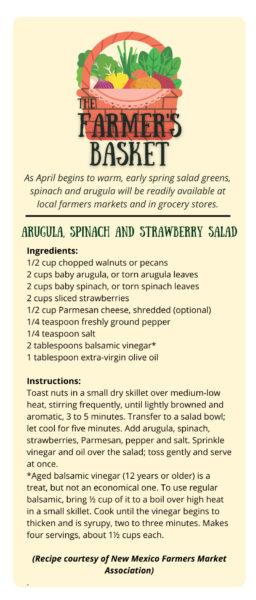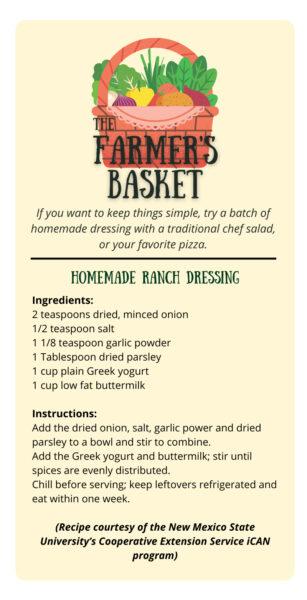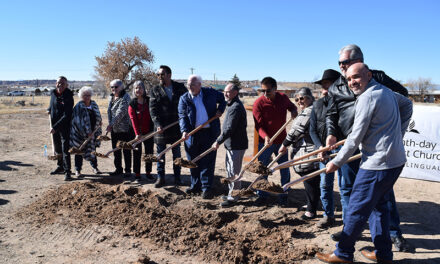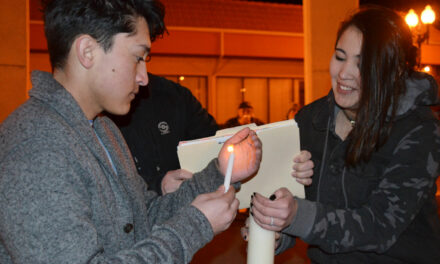
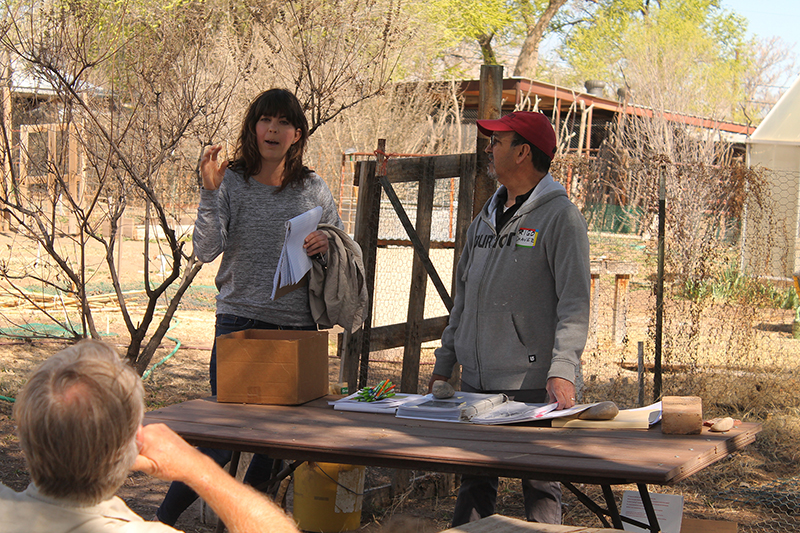
Julia M. Dendinger | News-Bulletin photo
Sally Cassady, above left, ICAN food systems specialist with the New Mexico State University, and Rigo Chavez, right, with Valencia County Master Gardeners, introduce themselves to the group of local gardeners enrolled in Ideas for Cooking and Nutrition’s Seed to Supper Beginning Vegetable Gardener Series. The six-week series will be held at the Valencia Community Gardens in Tomé.
TOMÉ — On a little more than half an acre in Tomé, community members have created a sustainable, shared garden that will serve as the outdoor learning space for new-ish gardeners to hone their skills.
For the next six weeks, the Valencia Community Gardens on Silva Road, between the Tomé Plaza and Tomé Art Gallery, is the home to the New Mexico State University Cooperative Extension Service’s Ideas for Cooking and Nutrition’s free Seed to Supper Beginning Vegetable Gardener Series.
The course teaches beginning vegetable gardeners how to successfully grow their own food, from planning a garden space all the way to harvest.
Last week, 10 Valencia County residents came to the community garden to begin learning how to plan and prepare for a garden. In the still chilly, dappled shade on the edge of the gardens, Rigo Chavez, a Valencia County Master Gardener, talked about choosing the correct site for a garden, the first step to great growing.
The main factors to choosing a garden location include sun, soil, water and airflow. The handbook for the course also emphasizes the matter of convenience — things that are out of sight, tend to be out of mind, so putting your garden in an area you frequently see or pass through is a good place to start.
While most vegetables need at least six hours of sunlight, in New Mexico, the sun can be too much of a good thing, Chavez said.
“Tomatoes, for instance, do well with morning sun and afternoon shade,” he said. “But you might have to provide some shade earlier in the day. The New Mexico sun is an unforgiving sun.”
Ralph Becker, one of the participants, said when he’s grown tomatoes in the past, he kept them under shade cloth all the time to prevent blossom drop, which leads to the fruit not forming on the plants.
Chavez encouraged the group, and anyone wanting to grow their own veggies, to plant food you are going to enjoy eating.
“This is all about what you want and what will grow,” he said, noting those two things can be at odds.
For instance, you may love blueberries, but they require acidic soil, a humid environment and are not well suited to the dry Southwest climate.
“My wife wanted blueberries. We tried it for two years and got nothing. It’s just too warm here,” he said.
When planning a garden, people often ask how big it should be and that is determined by the space needed by the individual plants, Chavez said. A tomato plant that isn’t supported by stakes or a hoop needs 3 feet of space around it; however, a pepper plant needs much less, meaning the area needed for one tomato plant could accommodate three pepper plants.
“Your plan for your total space based on the needed footprint of the plants,” he said.
When deciding how to arrange plants, Chavez said gardeners should group compatible plants together in terms of water usage, nutrient needs and length of growing season. Planting guides on seed packets and started plants will have that information, he said.
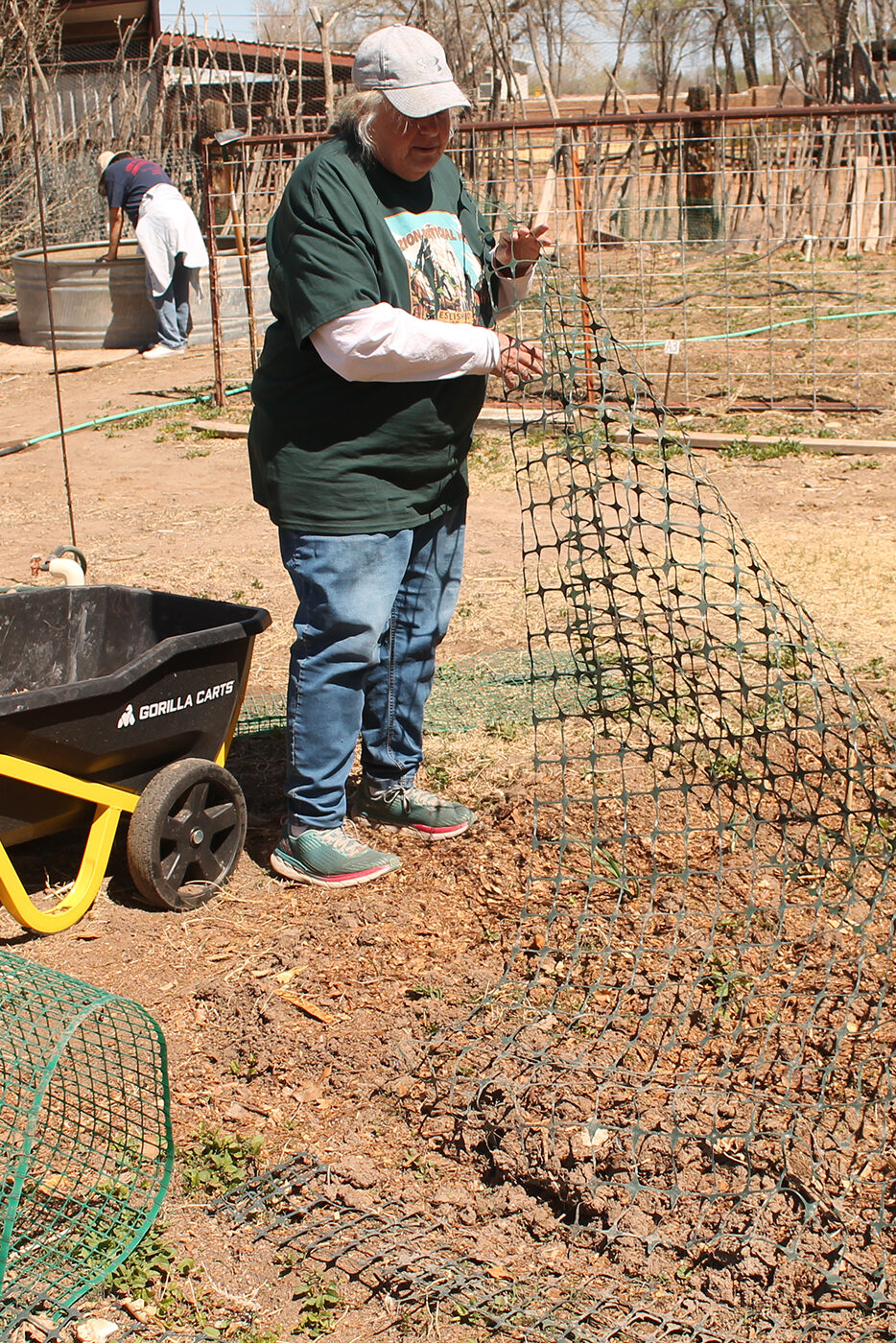
Julia M. Dendinger | News-Bulletin photo
Erika Novich, a member of the Valencia Community Gardens, helps prepare beds at the garden for the spring.
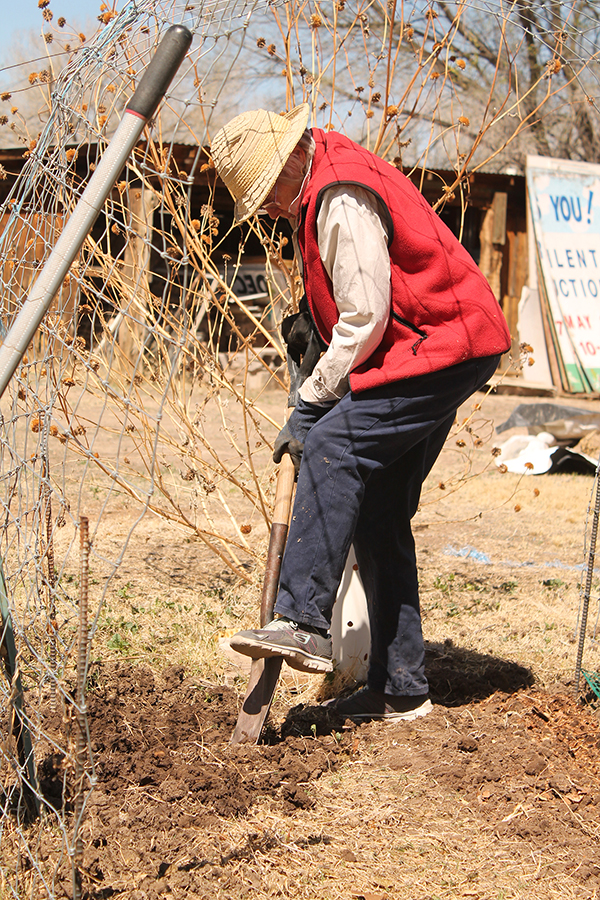
Julia M. Dendinger | News-Bulletin photo
Valencia Community Gardens president Deb Christenson said anyone is welcome to help in the gardens and enjoy the harvest.
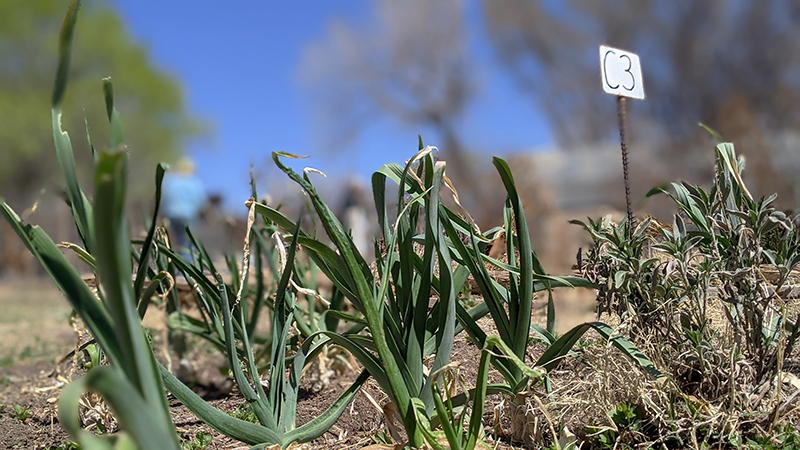
Julia M. Dendinger | News-Bulletin photos
Leeks, such as these in the Valencia Community Gardens, are frost resistant and make a good winter crop.
“You also don’t want one type of plants to literally overshadow another and cut off that every important sunlight. Sunflowers are easy and fun to grow, low-water use and don’t need a lot of extra nutrients, but they can grow so tall and create too much shade for nearby plants,” he said.
The Seed to Supper course book also recommends considering what vegetables are what’s considered a good value to grow, in terms of water use, effort and harvest.
Radishes and lettuce, for instance, are easy to grow from seeds, which are less expensive than already started plants, grow quickly and can be sown and harvested multiple times in a season.
However, a single pumpkin plant can uses a lot of your garden space, takes a long time and produces only a few pumpkins.
Other good value vegetables include carrots, beets, leeks, potatoes and zucchini and other bush summer squash.
A properly-planned garden has a water source nearby to keep plants well watered in the desert heat. Chavez said a gardener can use the existing shape of the garden plot to their advantage.
“If there’s a natural slope, plant high-water use plants at the bottom so they catch runoff,” he said.
A word of caution from the master gardener — make sure low spots with plants have proper drainage, otherwise the sitting water can cause the roots to rot.
Chavez uses a soaker watering system, which he feels penetrates the ground better to reach the root zone of most plants. To make sure the water makes it down to the roots, some soil amendment may be needed.
Many areas in the valley have heavy clay, which can be nearly impervious to water. Adding sand will help with penetration and drainage. Adding organic material such as manure will also help soil drain better.
Chavez recommends turning organic matter down at least 8 to 12 inches, even if you are planning vegetables with shallow root systems, such as lettuce which only go down about 4 inches.
“You can add manure just about any time before you start planting,” he said. “Just don’t add it during the later summer months because it will heat up and burn your plants.”
Although he has grown vegetables before, Becker signed up for the Seed to Supper class to continue his education.
“I enjoy learning more from people with experience,” Becker said. “I grow my own tomatoes, chiles, lettuce and herbs, and add them to meals when cooking. It’s nice to be able to go out and snip something fresh from the garden.”
As the group learned more about beginning a garden, members of the Valencia Community Gardens worked in the spring sunshine, turning soil and preparing planting beds, watering new sprouts and generally enjoying playing in the dirt.
VCG president Deb Christensen said garden workers are out at the gardens by 10 a.m. on Wednesdays and Saturdays, and anyone was welcome to come help and join the growing community of gardeners.
The gardens are on Silva Road just north of the Tomé Art Gallery.
Paid Advertisement — Click the ad above for more information
Julia M. Dendinger began working at the VCNB in 2006. She covers Valencia County government, Belen Consolidated Schools and the village of Bosque Farms. She is a member of the Society of Professional Journalists Rio Grande chapter’s board of directors.
